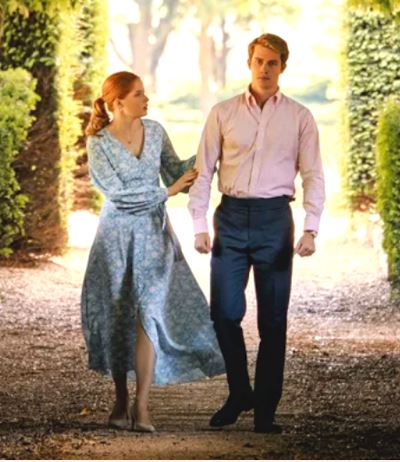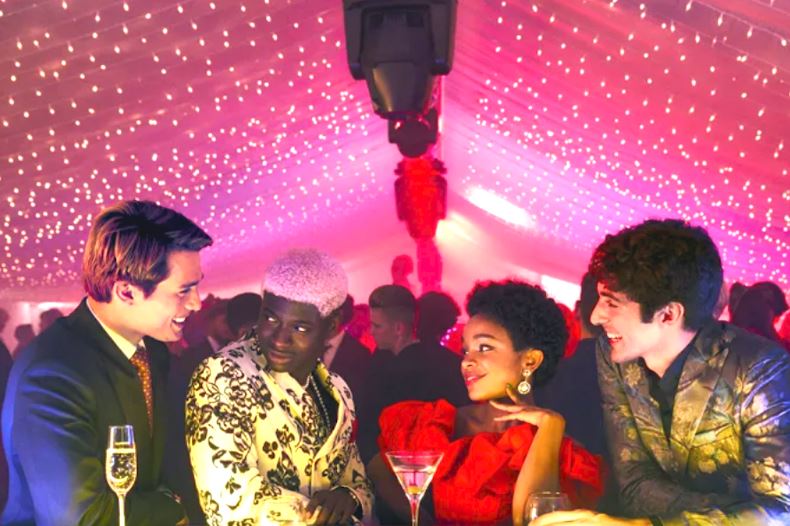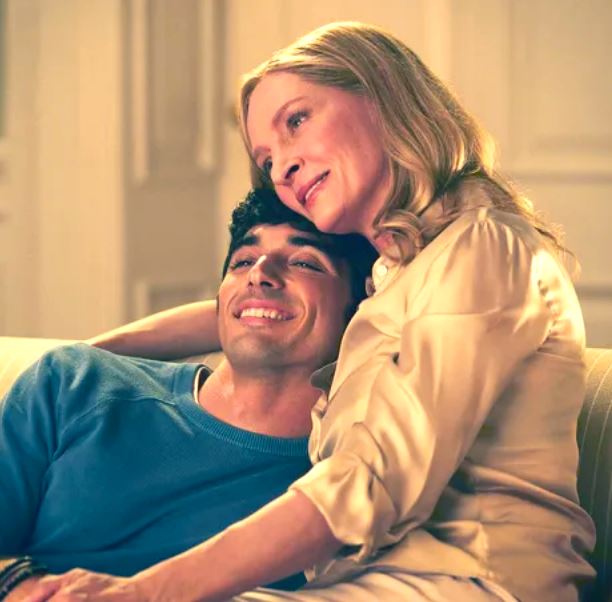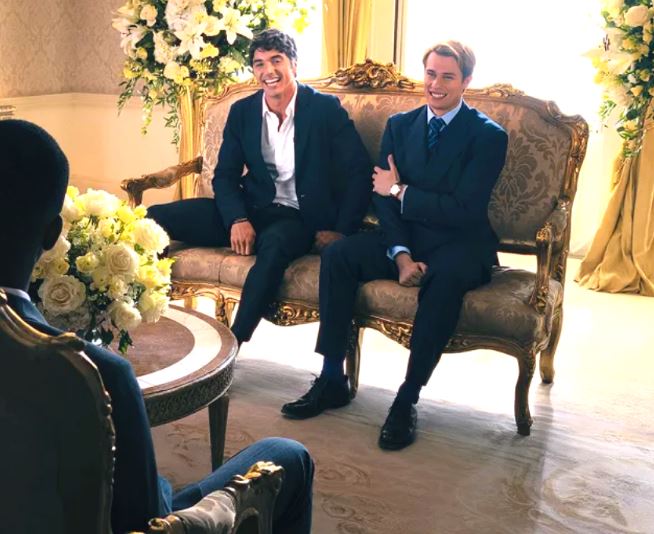
By Gary M. Kramer–
The charming gay romance Red, White, and Royal Blue is the fabulous screen adaptation of queer writer Casey McQuiston’s irresistible bestseller about the unexpected love affair that develops between Alex Claremont-Diaz (Taylor Zakhar Perez), the First Son of President Ellen Claremont (Uma Thurman) and Prince Henry (Nicholas Galitzine), of Britain’s royal family.

The scions, however, are enemies at first. It is only after they are forced to do damage control following an “international incident” that they realize they share feelings for each other. But then they have to keep their relationship from being discovered—especially as President Claremont is running for re-election.
In his directorial film debut, Matthew López, who co-wrote the screenplay, makes Red, White, and Royal Blue swoon-inducing as the two lovers engage in their clandestine romance. López recently spoke with me for the San Francisco Bay Times about his enchanting new film, which will be available for streaming at Prime on August 11.


Gary M. Kramer: This is your first feature film as a director following a very successful career as a playwright. What prompted you to shift into cinema, and why was this the right project for you?
Matthew López: I had always wanted to make movies, ever since I became a movie junkie as a teenager. Theater was much more accessible to me as a creative person because of my family and the proximity of living in New York. I was looking for a film project and I had a couple of different things I was circling. Then my agent sent me this book, thinking I might want to turn it into a musical, and I said, “Sure, but let’s turn it into a movie.” It’s funny, when you know, you know. I read this book and could see the movie. I was filled with a very strong desire to be the person to make this film. I tenaciously went after the job. The two characters were too compelling not to want to live in their world and tell their story.

Gary M. Kramer: How did you lean into or away from romcom tropes? There are swoony moments, such as Alex and Henry dancing in an empty museum. How did you make the film romantic?
Matthew López: I think there is something inherently romantic about two people who want to be together but can’t. You can’t go wrong having two loves and putting a wall between them. That’s why there are apt references to Pyramus and Thisbe in the novel. The romantic infrastructure was already in place. The inherently romantic settings of palaces and the White House help. We used these locations to create an atmosphere of romance. It was a conscious decision that the movie needed to operate in a way that was lush and cinematic. At the end of the day, all of that is academic without Taylor and Nick. If I inherited a lot from the novel, and I engineered with my cinematographer and designers, the last thing was getting lucky with those two guys.
Gary M. Kramer: The film is about queer visibility. Can you talk about this theme, which is crucial to several emotional moments in Red, White, and Royal Blue?
Matthew López: What always drew me to the novel is the idea of two people who have so much access to so much—as Henry and Alex do—having infinite choices about their lives. What I thought was so beautiful and painful about the book is the paradox they live in. They have fewer options than some people might. To be a Prince of England and gay you’d think, “Jackpot!,” but instead, that’s terrible, because he can never tell the world who he is. He can be one or the other, but not both. There is this beautiful tale within the fairytale. I never saw this story as a story of self-acceptance. I see it as finding a way of bending the world to the truth of who you are. We talked about this movie as being about young people in old buildings. It’s about people who find themselves up against the force of institutions that insist that they be one thing. And instead of bending themselves to these institutions, they bend these institutions to themselves. It is knowing who they are, and not budging on who they are as these seemingly immovable institutions bend around them.



Gary M. Kramer: What observations do you have with the issues of privacy in the film and how public figures must navigate their personal lives and the media?
Matthew López: It’s always been true, and the social media age hasn’t really changed it. We know as much about public figures as they allow us to know, and a lot of public figures use the media and social media to be known in the world. But Alex and Henry are a perfect example of how you don’t really know a person because they are on your TV screen or in your cinema. A person’s heart is not the same thing as their Instagram page. What the novel does brilliantly, and what I wanted to capture in the movie, is what do public figures owe the people who follow them, and who are fans of theirs and what do we owe them in exchange for giving them the pleasure or thrill of seeing them operate in the world. For Henry and Alex, the big struggle for them is: How do I maintain a sense of individual self in the face of being one of the most famous individuals in the world? Just because we see them on our screens doesn’t mean we have a right to know everything about them—only to the extent that they are willing to share it. Most people choose to live publicly, but Alex and Henry are given no choice. Everyone has a right to privacy and an interior life. Red, White, and Royal Blue reminds people that public figures have an interior life that we do not have a right to access.
© 2023 Gary M. Kramer
Gary M. Kramer is the author of “Independent Queer Cinema: Reviews and Interviews,” and the co-editor of “Directory of World Cinema: Argentina.” Follow him on Twitter @garymkramer
Film
Published on August 10, 2023
Recent Comments